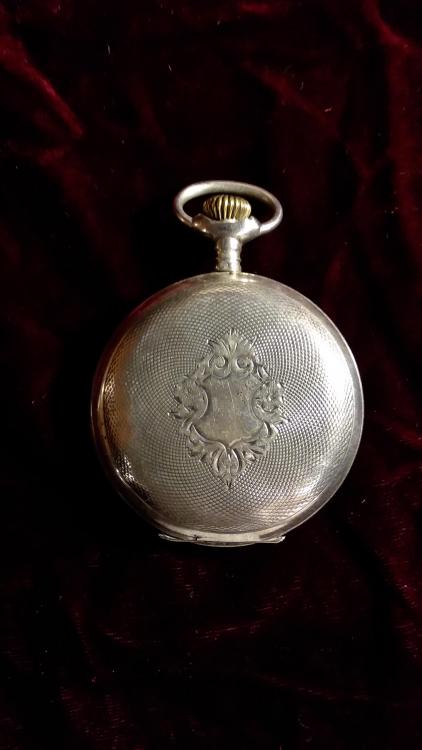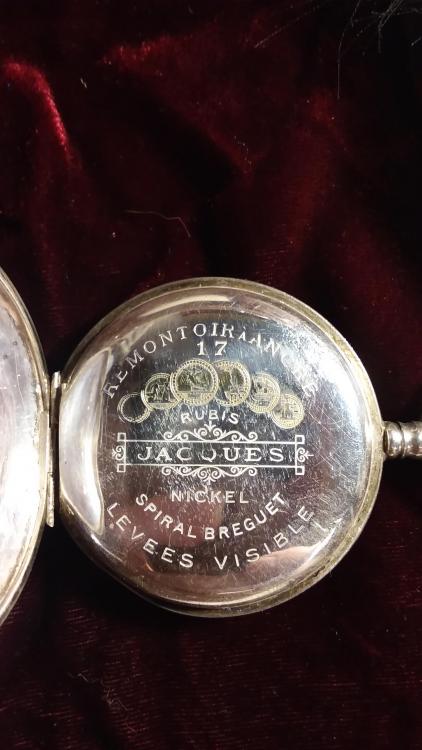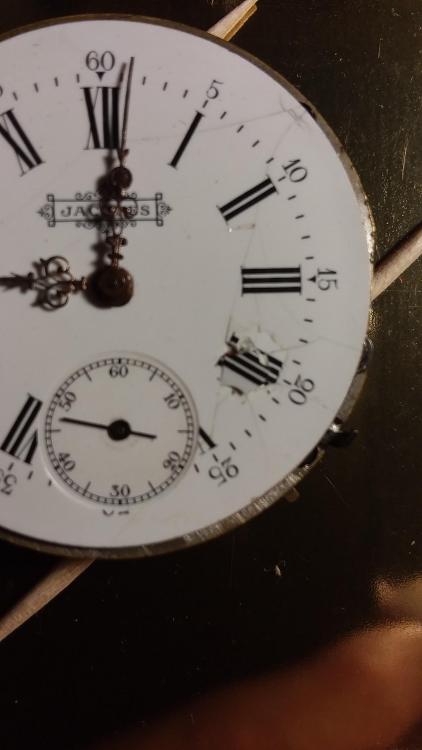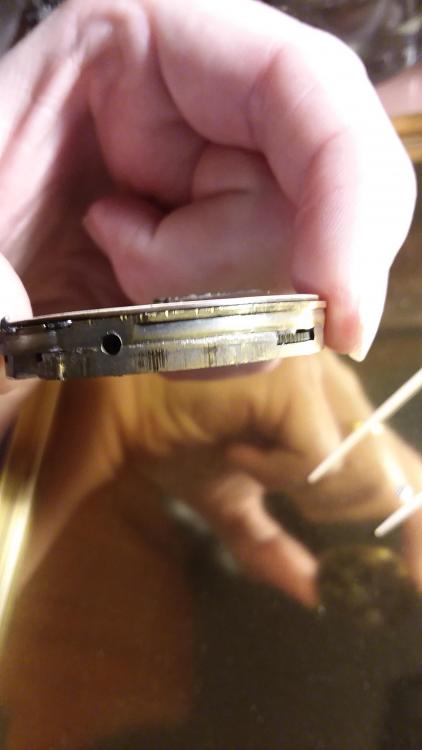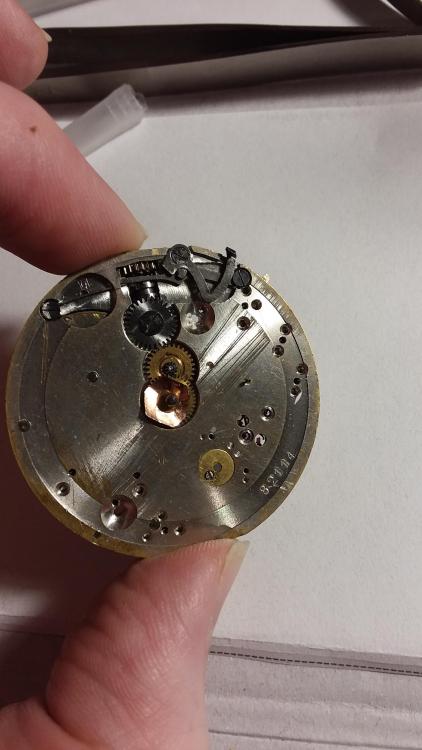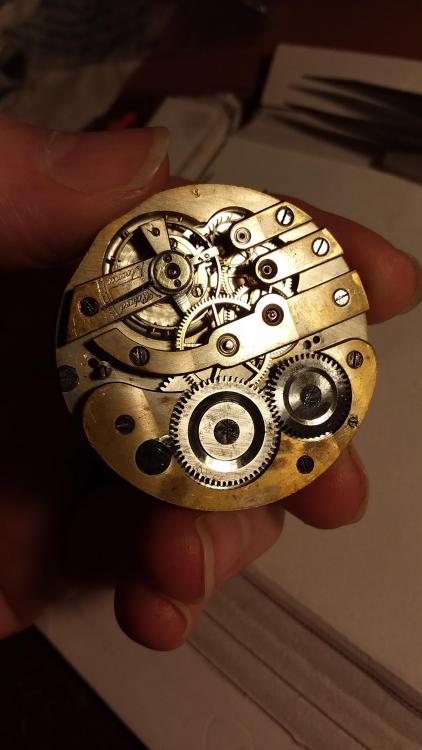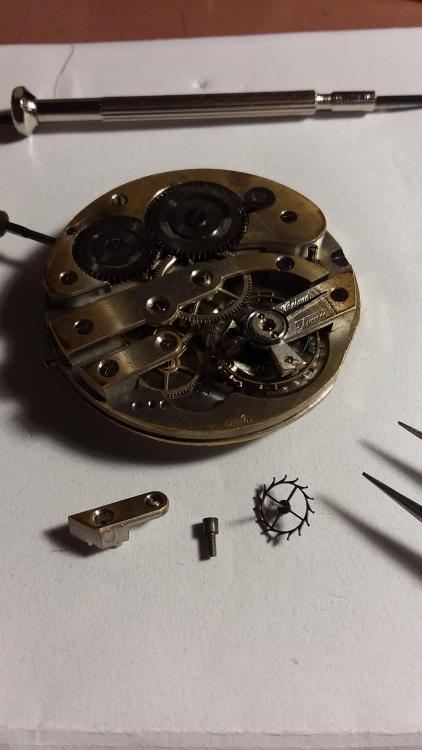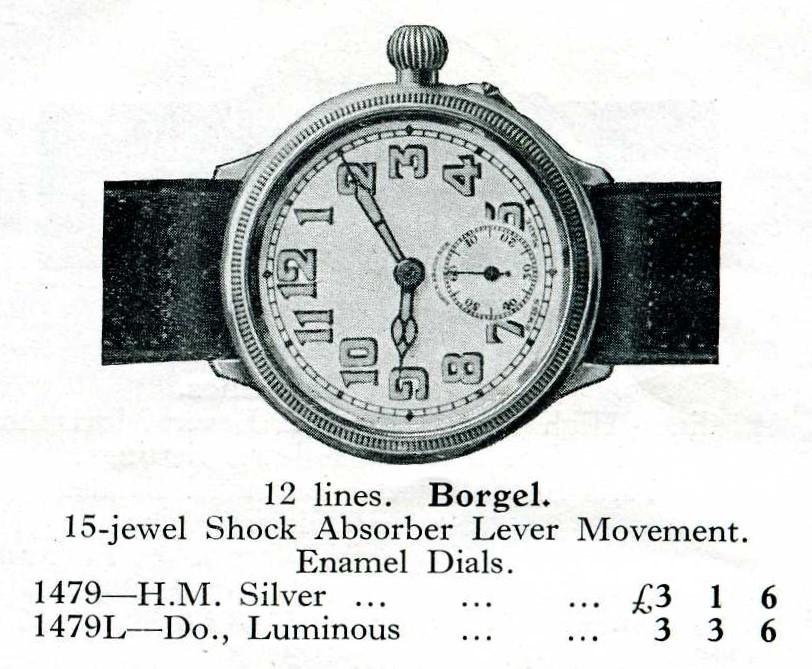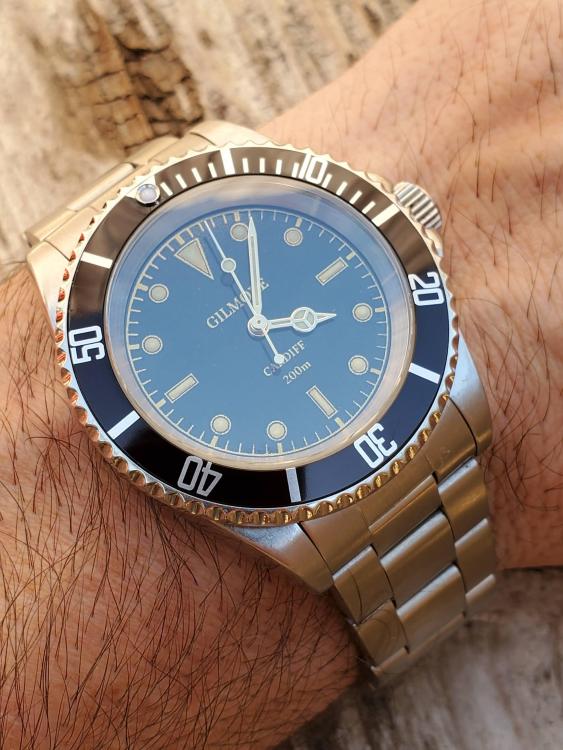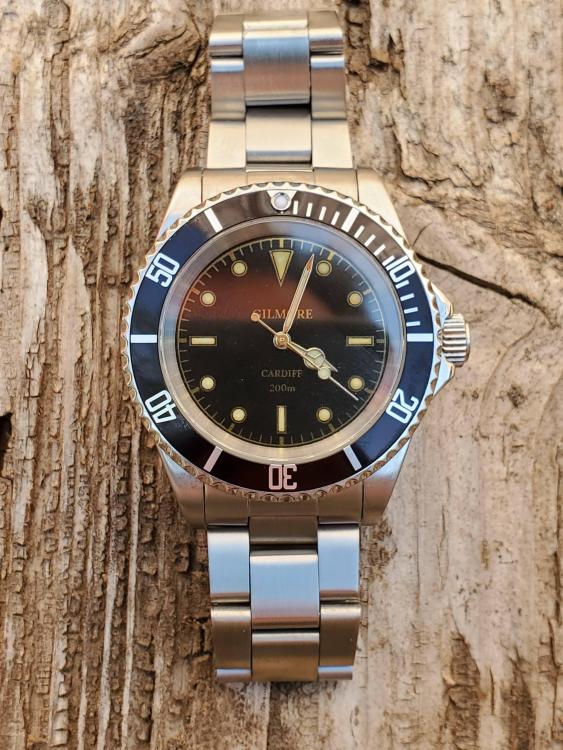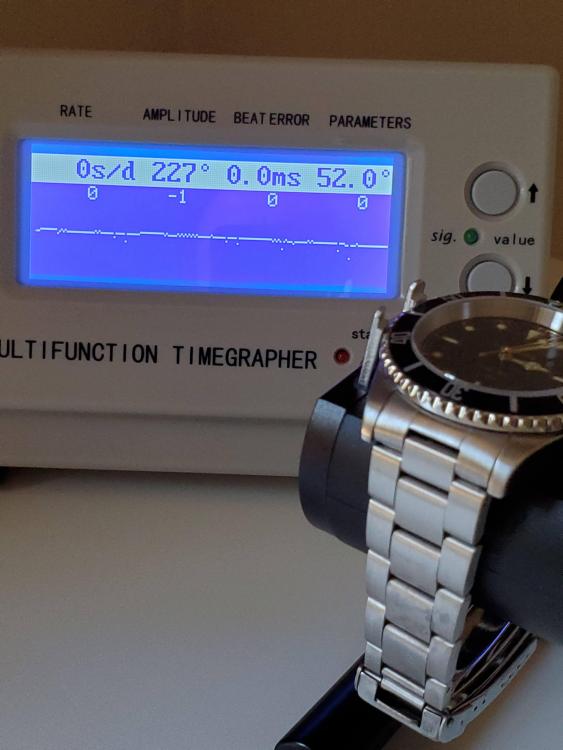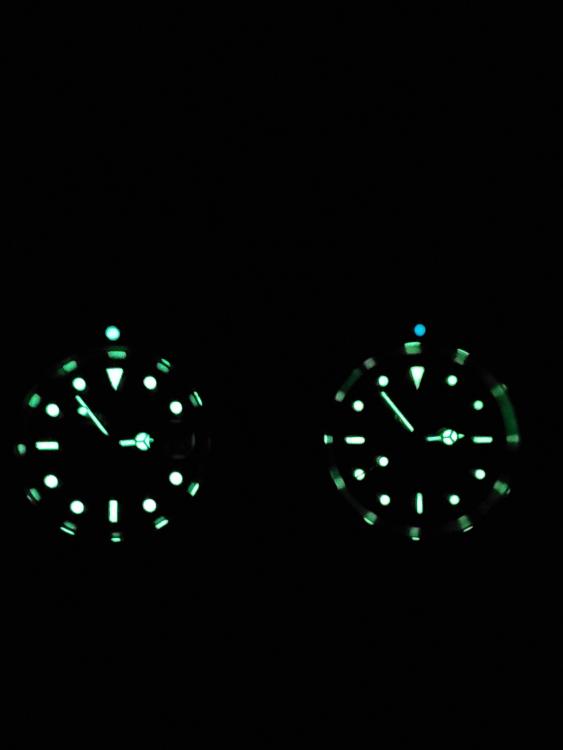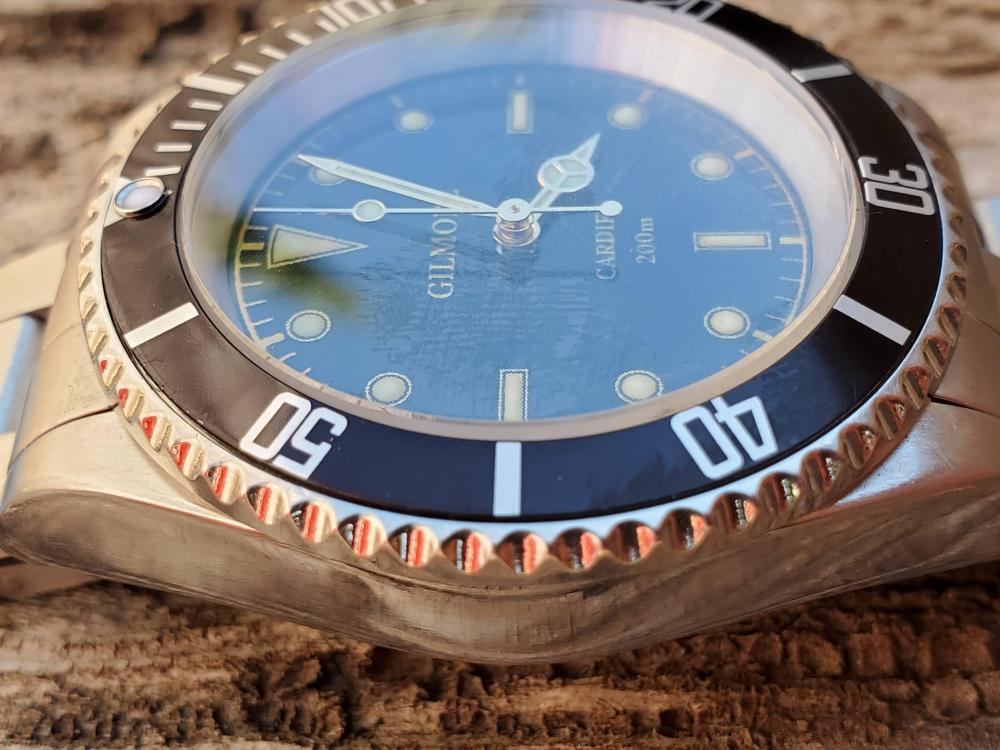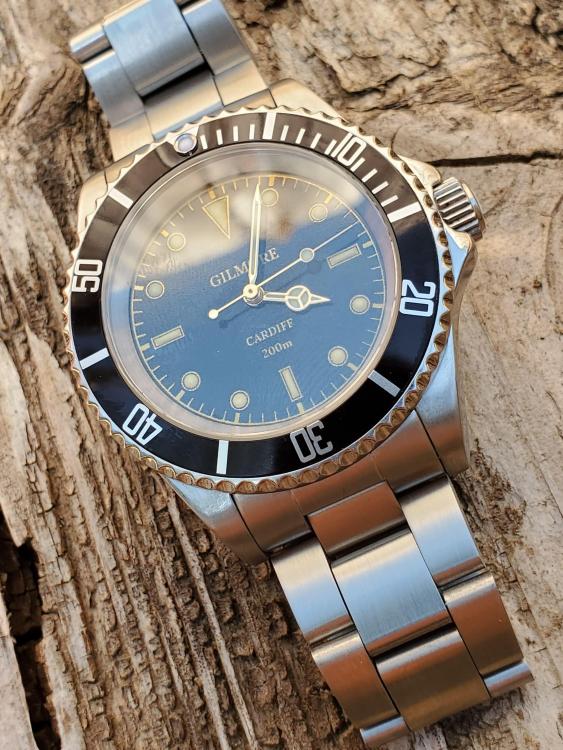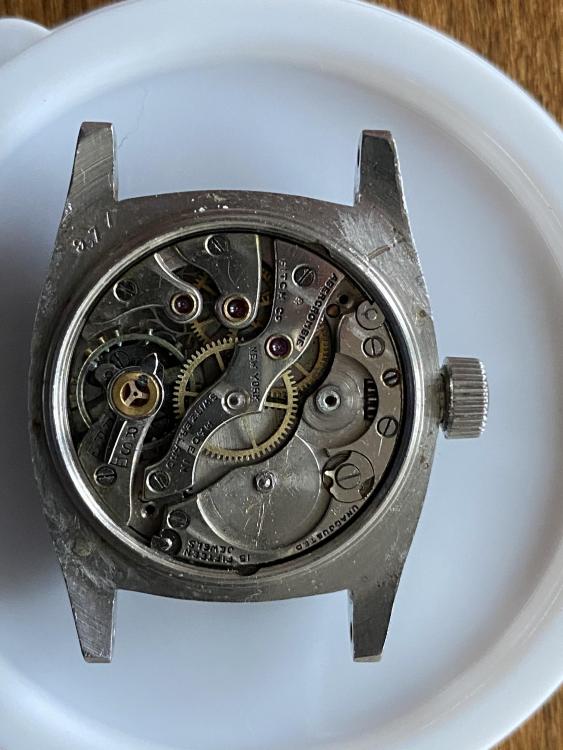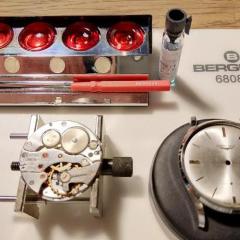Leaderboard
Popular Content
Showing content with the highest reputation on 08/04/20 in Posts
-
Poise is correct We can find many similar shaped pallets from that era, also called "moustache" pallet. But soon they found that the so increased inertia is much worse than some imbalance and these moustaches disappeared. Frank4 points
-
If you haven't before worked on watch movements I recommend that you start with one that works, and consider enrolling the course on watchrepairlessons.com Otherwise it will be much more difficult to learn expeditely.2 points
-
2 points
-
1 point
-
That is an Hamazawa mov't, you can search the Internet to learn about it. You can release the stem lifting the lever above it. It is almost certainly beyond repair but good to learn on. If you measure it is possible that it can be replaced with something else, or search for a working donor watch .1 point
-
Not 100% accurate, at least two of them work. I may have one or two corpses spare part donors, but most of my HMTs do in fact work just fine. OK, maybe they didn't when I purchased them, but with a little TLC, they now work perfectly. You are just jealous that I have the yellow-est non after-market dial HMT ever created.1 point
-
I disconnect the balance complete to get it out of harms way. Refer to picture No2 you posted. What looks like an hour hand screwed on the cock, that either pushes on end stone to keep it in place, or end stone is fitted in it. It can be pushed to the side or if you can remove the little screw thats on it, balance jewel under neath smiles at you.1 point
-
watch bridges are pretty unique. some like the eta 1080 were copied a great deal.But the fhf 96 not so much. one thing i have to say about the India watches is that the cases are generally made from a decent grade of stainless steel, it is a hot country and people sweat. you need a watch there that wont corrode on your wrist1 point
-
If the key is turning and nothing is happening look closer at the very inner coils of the mainspring. If none of it is moving you either have a broken eye on the end of the mainspring, or a broken hook on the arbor of the winder so its not engaging the spring. If the last few cm of the spring is winding up but not the rest of the spring then the mainspring is broken and will need to be replaced. The only way to check is to dismantle but make sure you remove the power on the alarm side first. If you haven't already I suggest buying a book on clock repair. One that isn't too expensive and is easy to find is 'Practical Clock Repairing' by Donald de Carle. Some parts of the book is a bit dated, but its still a good book to start with.1 point
-
An old & close friend brought me his father's watch...after some other "repair" person's apprentice got done with it. It was supposed to only get a cleaning. He insisted on springing for parts and supplies, but largely it's my favor to him. I couldn't charge labor on top of what they put him through. This shop assistant (I'm guessing) didn't appear to know how dials came off. The base plate seems to be marred from prying. The dial was fractured and divoted where that foot was located. And that foot has the tip broken off, and that foot screw was missing when I received the watch. Hmmm. It did not get the cleaning they charged him for, I can tell you that. Nor did they polish the case, per request. And I think they tried to patch the dial with UV resin. I believe the movement once had an outer..."case ring" is it called? I may have to obtain or fabricate one, so that the movement is not too loose in there. I found flakes and grit from shattered "porcelain" face enamel in the setting linkage. So the movement got a complete strip and clean, fresh silicone grease, and fresh oil. It now runs as smooth as silk. I polished the case also, and even the chain. Now I just need to fix the dial foot, get a replacement screw, repair the face better than I've ever done (pray for me, 'cause that'll be the hardest part) and likely make a movement/case ring. Still some fun ahead. I may have to add a short vid at the end once it's all back together, looking and functioning as well as it ought. It's basically a late-1880s ebauche, possibly from Schild, that Jacques branded. Stem wind/lever set Swiss straight line lever. I haven't looked up the case yet. Fantastic for a mass-produced movement.1 point
-
If Orient USA has the parts and will sell to an individual domestically, you can use a reshipping service or ask here for some member to help you out.1 point
-
Thank you Praezis. That had me a bit stumped. I have an 1888 Hampden, size 6s, and I was really sure I would have noticed a crescent-shaped projection like that on the lever. But I got to second guessing and was ready to go peek. This is what I love about this forum: odds are pretty good that someone on here knows something obscure that I don't, and which I may take forever to find on the internet. So, "Mustache" levers sound like they were a bit of a flash-in-the-pan as it were.1 point
-
1 point
-
If you do open it be aware that as the watch was manufactured in the 1940's (apparently for the Canadian market) the lume WILL BE RADIUM, so take the appropriate care....................1 point
-
Hello there. I know I am resurrecting another old thread but I wanted to let you know that I am 99% sure your watch is original and all the bits go together, apart from the hands where at least one is wrong, as they are not a pair, and probably both (they were probably luminous originally). As has been said the movement is a Helvetia 81-24, this movement was introduced in 1929 when Helvetia patented their new shock protection system. Helvetia is a brand I collect and have a site on, they only numbered the bridges of their movements for a short period around 1930. The serial number on the case is a Helvetia one and also dates the case to 1930, this would make the hallmark date letter a 'Z' which it does appear to be. You can see the lugs of the case are of a later style more similar to a cushion watch than earlier Borgel trench watches. Helvetia specialised in water and shock protected watches, their main importer to the UK was Robert Pringle and Sons of London. You can see the Robert Pringle and Sons import mark 'AGR' on the case (for Arthur George Rendell an employee of the company). Periodically Robert Pringle and Sons published a catalogue and below as the final proof is a picture of your watch from the 1931 edition, note the case style is the same as your watch and different to earlier Borgel cases. Have a look at my site here https://www.helvetiahistory.co.uk/1930s-sports-watches for more info on Helvetia water and shock proof watches. Thanks. Carl.1 point
-
New member here. I've gone through all three courses, and now I've disassembled and cleaned the Seagull ST36 6497 and I'm in the process of putting it back together. Need help getting the right mainspring winders for the movements I'm working with (6497, Seagull ST2100 [ETA 2836], and Seiko NH35A) I currently mod watches (create and lume my own dials, re-brush and re-polish cases, tune bezel action, add sapphire crystals, etc.) Got into watch repair because I screwed up the keyless works on one of my ETA 2836 based watches and watched Mark's YouTube videos to fix it. Thanks for everything Mark! When is course #4 coming out?1 point
-
There is a possibility that its to do with the balance and poise of the pallet, as well as being decorative.1 point
-
HMT I believe stands for Hindi Machine Tool which is an Indian company, possibly government sponsored, set up in the early 1960's. They use Citizen designed movements made under license in India and produce some fairly good budget watches.1 point
-
Which as you wrote them are the same part numbers. Now, I had answered this before, but can do that again it here. Tecnically speaking there is no designation such 7S26 and no letter. Since its introduction, Seiko has placed a letter at the end, that is A, B, or C in chronological order of introduction. When someone refers to 7S26 and no letter, in a technical context that can introduce ambiguity. To help on the matter I have summarized all these changes is a document, here's it again: https://docs.google.com/spreadsheets/d/1sYt_mI9c4tAPiKN3IM8lQx3NEEOyz2DMjVHx5I1_Mqw/htmlview Just go on Ebay or the Internet and search for the P/N detailed in the document above. You may need to add or omit both the leading zero and the separating dot in order to get all matches. Note, you can be asked ridiculous prices for either new or used individual parts. The best approach is to get a complete mov't or watch for cheap, and use it as a source of parts. No it is not, and the notes in my document explain why.1 point
-
1 point
-
1 point
-
That's not good enough, assuming you measured on a full wind with the correct parameters. I'd take that back. Be careful telling them that you used a timegrapher. Sometimes that causes the argument of "you think you know everything just because you are able to measure something". It may be easier to say that the timekeeping wasn't as good as expected and you had it measured by someone else.1 point
-
1 point
-
What you have got is called Niello which is a surface decoration technique for silver. Google Niello and you will get lots of info but here's a link that may be useful.1 point
-
Hello all, I need to find parts for this military watch from Abercrombie & Fitch from the 40’s. I don’t think it is an Heuer movement but was wondering if anyone could help ID it. I looked on Ranfft site but could not tell how to begin a search. Thanks for the help. Ps it has a sundial for seconds in lower center.1 point
-
I'd concur with @HSL making this specifically a Helvetia 81-24. In which case you might find this of interest: https://www.helvetiahistory.co.uk/movements1 point
-
First I was thinking of a FHF then I changed my mind and will go with a The General Watch Co - Helvetia, Helvetia 81. If you can get a shot so one can see the keyless I think it will be easier to identify....1 point
-
I think the set lever screw goes on before barrel bridge dose, did you not get a datasheet for this? If too many missing parts, a scrap/spare movement hurts wallet less. ST96 has been made in India for sometime now, cheap and good for spare. Lighter fluid is available in supermarkets( you save on shipping) inexpensive and works real well. I keep like 10mml in small jar, cork keeps the fluid from vaporizing and leaving the jar. Good for final clean and rinse of complete balance& cock, fork and all gears/ pinions.1 point
-
With the exception " independent manual wind" , module gears in all auto winders engage as you wind manual, said gears turning doesn't mean you have spotted an issue, thats how they all are and suppose to be and yes that do put extra load on winding manually. The issue you may have is, the said load might be abnormally excessive, in which case you are highly likely to have another issue with the winder that you have not yet spotted, and that is the question of, the winder efficiency. A normal day's wind on wrist is your actual power reserve, so measuring the reserved power during a normal day shows how efficient your winder is, which is not expected to be much in your watch. The least would be, rotor winding whilst falling under own weight. If manual wind is indeed hard( a matter of personal judgement) then all indicators point to a fault in the module and mostly poor clean and wrong lubing. An easy test would be to remove the winder then if still hard to wind manually, you watch has an issue outside the module as well. This is a high grade movement and expected to live up to its name, Record&Longines. Regards1 point
-
I think so. Easy to test, remove the auto works and try if it becomes any easier. You can also count how much de-multiplication there is from crown to barrel by counting respective turns, maybe it is not a very favorable ratio. The wheels are lubricated internally by dropping them in the solution. I do not recommend tobuy at the crazy prices asked, but simply make you own as described in the many topics on the subject. Before dwelling in another debate consider that in your case the auto works appear to pass the first test of not spinning the rotor when hand winding, the second test is to see if the weight alone of the rotor winds over the spring with the mov.t vertical at all states of winding except perhaps "very fully", and third try on the automatic or human arm.1 point
-
"Five bar". I think I've heard that before; and looking at the movement I get it now. I think my friend didn't take it back to that shop to undo the damage simply because he no longer trusted them, and wasn't sure they could correct it. I do not know why (or if) he chose not to sue. But the other puzzling thing, as my friend related the tale, was that the head jeweler/repairman of the shop handed this watch to his (then) brand new apprentice to service. Why would he do that? I mean, sure, this is no Patek Phillipe or Vacheron Constantine, but doggone it, man, it's somebody's prized Swiss watch that they're paying *money* to have serviced! If he didn't care about the watch, he could have at least cared about his own reputation. As I see it, the point of a "repair" shop is for devices to leave in *better* condition than when they went in. Or, if that's not possible, no worse than they went in. My friend and I go way back. This watch is deeply important to him. Therefor, it is deeply important to me. Whatever skill I have I will pour into restoring it at full measure. And I see that's what I should always do. It seems right.1 point
-
Its a pity the person didn't take it back and told them to put it into the same condition as when they took it to that incompetent person, they should have sued them. Because of the damage they have inflicted on that watch they have removed any value to it. The movement is called a 5 bar movement and are normally Swiss made. Good luck with what you are willing to do in helping your friend, not an easy task. I look forward to the video if you record one.1 point
-
That’s the nice thing about watches and clocks. Its not just about the money. You have the pleasure of owning the piece.1 point
-
Well..... I have fallen in love with the little movement. Sent from my SM-G950U using Tapatalk1 point
-
Says adjusted in three position and rare and unique shock protection, if dial and hands are in good shape and the rest Genuine, I would seriously look into restoration.1 point
-
The case is a Francis Borgel waterproof case it looks too early for the movement, but it appears to have import marks on the inside of the case so you should be able to date the case from the date letter, I would put the case from 1910-1920 so too early for that movement.1 point
-
I collect WWII watches and sometimes you come around a similar movement, Helvetia 82A. This one seems more like it's past 1945.The Value is what someone is willing to pay for it.1 point
-
That's a sweeping statement that I don't agree with Vinn. It very much depends on what you intend making or repairing.1 point







